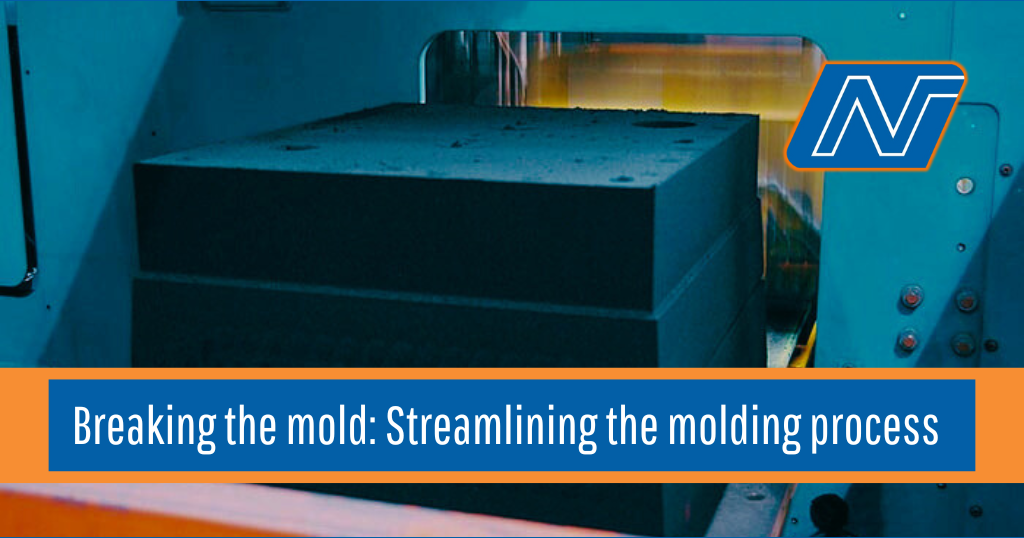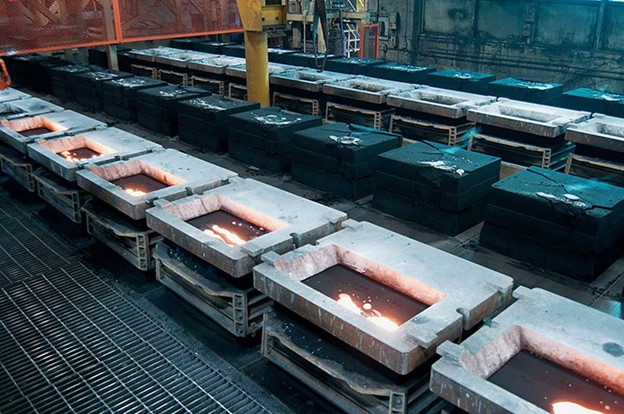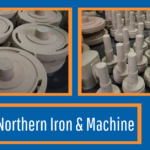
Many of us know what a pattern is. But do you know the process that goes into making that pattern into a mold?
Well, the process has been streamlined a bit, thanks to two high-capacity automated molding lines at Northern Iron and Machine. Those lines both produce green sand molds using a pattern, a flask and high-quality green sand.
Molding Lines Used at Northern Iron and Machine
The largest molding line at Northern is an Osborne 30 square line. It has mold flasks that measure 30 x 30 x 12 inches deep. The pattern is mounted on two separate plates. The top flask is called the cope and the bottom half is called the drag.
Northern Iron’s newest molding line is the Disa Match 130. It uses a match plate pattern and produces molds that measure 20 x 24 x 8 inches deep. The match plate pattern takes the two halves of the pattern and mounts them on opposite sides of the same plate. This allows the Disa system to make both halves of the mold at the same time. Disa can produce up to 130 high-quality molds per hour.

A closer look at green sand
You may be wondering what makes up the green sand used in the molds? Well, It’s comprised of silica sand and a Bentonite clay premix. The Bentonite acts as a binding agent. The term “green” refers to the moisture in the sand. There is a strict process to ensure the composition and moisture content of the green sand is kept within defined limits.
That green sand is packed into a flask that surrounds the pattern of the casting. The pattern includes runners, gates and risers that help distribute the molten metal evenly when pouring begins. The patterns consist of a positive impression of the desired casting. It also has runners and gates which allow molten iron to fill the void left in the sand by the pattern. Patterns are made from a durable material and built to exacting tolerances.
Cope, drag and more
The mold is manufactured in two halves known as the cope and drag. Filters, exothermic risers and cores are added to the drag side of the mold. Filters, risers, chaplets, and/or cores may be added to the mold, depending on the specific casting geometry. Cores may be used in areas where green sand molding is not capable of making a feature, such as internal surfaces or to shape complex external surfaces of the iron casting. The cope is rotated downward facing and placed on top of the drag to prepare for pouring. To prevent the cope half of the mold from floating, the flasks are either locked together at the parting line or weighed down, depending on the molding line.
Contact Northern Iron and Machine for your needs
Northern Iron & Machine produces grey, austempered ductile and ductile castings. The three-furnace foundry can make castings up to 250 pounds.
To learn more or get a quote, call Northern today: 651-778-3300






